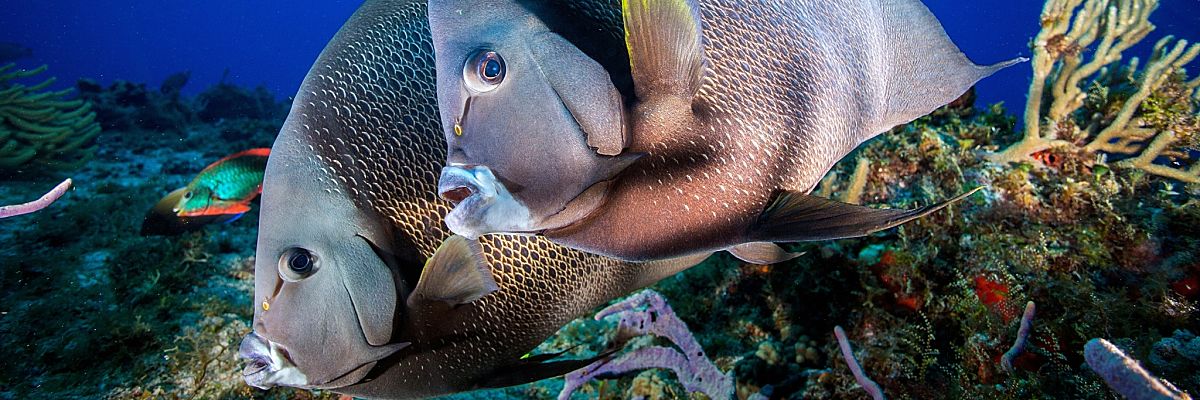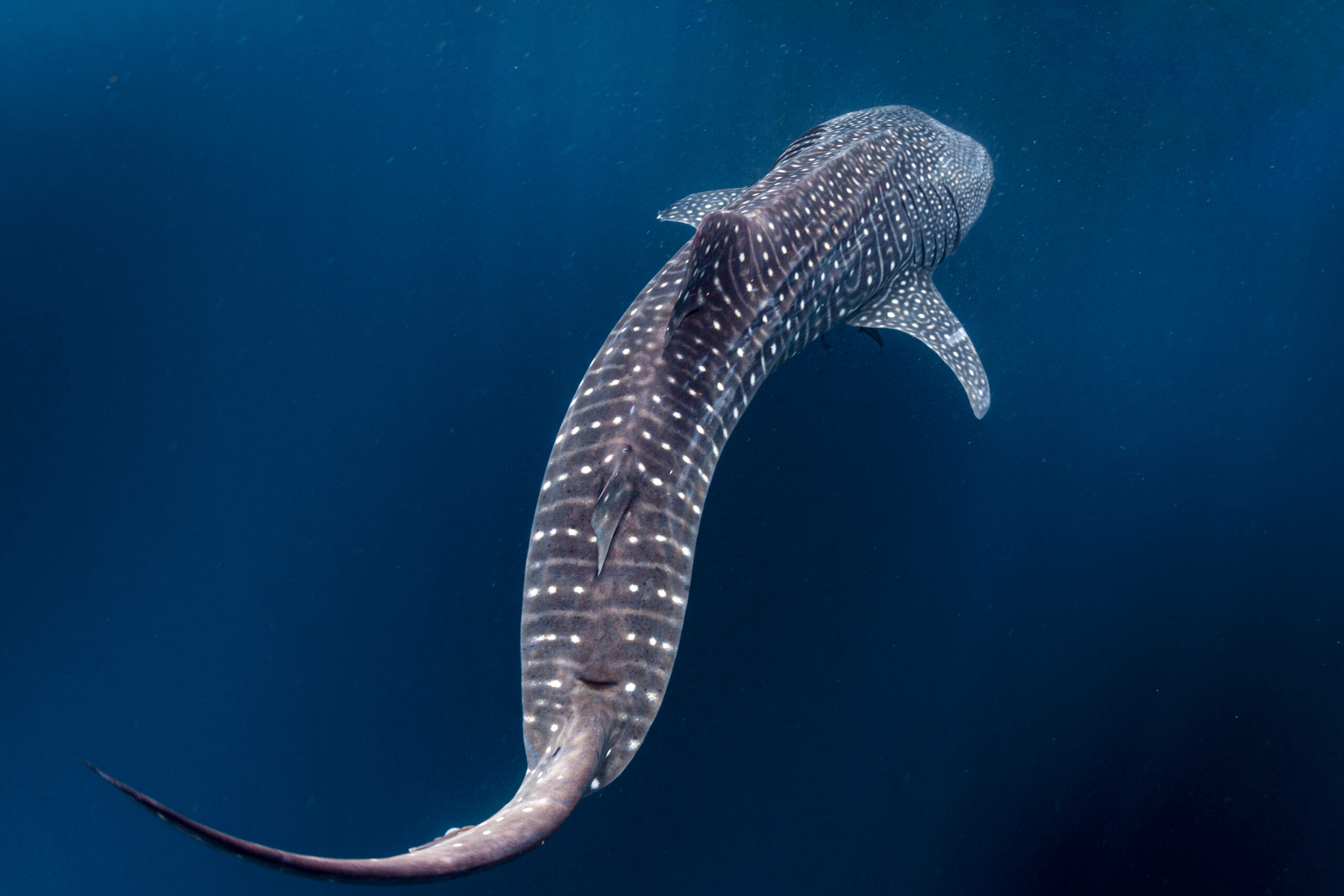Diving Isla Mujeres is, at one end of the spectrum, the pleasure of captivating Caribbean corals & reef fish …. while at the other end, some of scuba diving’s ultimate adventures – swimming with whale sharks or sailfish and diving in cenotes. You can enjoy effortless diving in clear, Caribbean water with eagle rays, parrotfish, creole wrasse, trumpetfish, angelfish and loads of other reef fish & critters. Just north of Puerto Aventuras, near the tip of the Yucatan Peninsula, you can swim with whale sharks during their annual migration mid June to early September.
The whale sharks usually gather here from June to September to enjoy the nutrients in the plankton bloom in the waters where the Gulf of Mexico and the Caribbean Sea meet.
In spite of habitually being loners, during this period the sharks are quite social and gather in groups of up to 20 animals …. making this an extraordinary opportunity for multiple shark encounters each day you’re in the water.
From January to March, the possibility of swimming with sailfish exisits. A bit like the sardine run off the coast of Africa, these are not guaranteed encounters.
The sailfish follow and feed on immense baitballs of sardines …. and if the sardines aren’t there …. the sailfish are nowhere to be seen. However, the event has been remarkably consistent over the past few years and the opportunity to experience this is well worth the risk!
The sailfish is probably the world’s fastest fish, making the experience of being in the water with them, particularly when they are in hunting mode, an exhilarating experience.
The process of finding the fish is part of the adventure. Your guides will be watching for the frigate birds, who actually function as “spotters”. When the guides see hundreds of birds swooping & diving into the water, it’s a sure sign that a group of sailfish has cornered a baitball at the surface and they are feeding.
That’s the signal to get the boat over to the spot and join in the melee!
Finally, Isla Mujeres also offers access to cenote diving opportunities on the Yucatan Peninsula.
A unique eco-system in Mexico’s Yucatan, the cenotes are filled with crystal clear, fresh water and they open onto a vast system of underground caverns, tunnels and chambers. For thousands of years, these caves had been dry, forming stalagmites & stalactites and in certain places, the land above has collapsed allowing access to the underground systems.
Since the 1980’s divers have been exploring the cave systems and it’s said that more than 300 miles of caverns have been discovered.
The caves and tunnels are not for novice divers. You’ll need special certification. But many of the cenotes are open to certified divers and are highly recommended as a very special life experience.
Please note that the diving here is land-based. Your accommodation will be on land and you will be taken by day-boat to the diving sites.



















